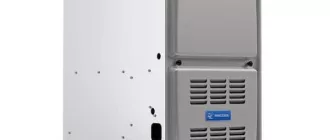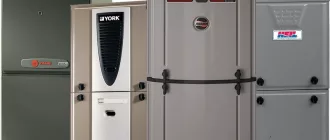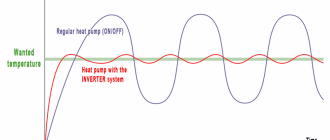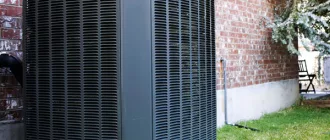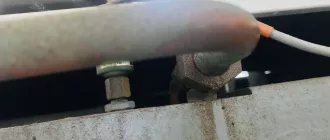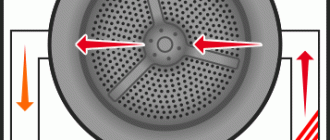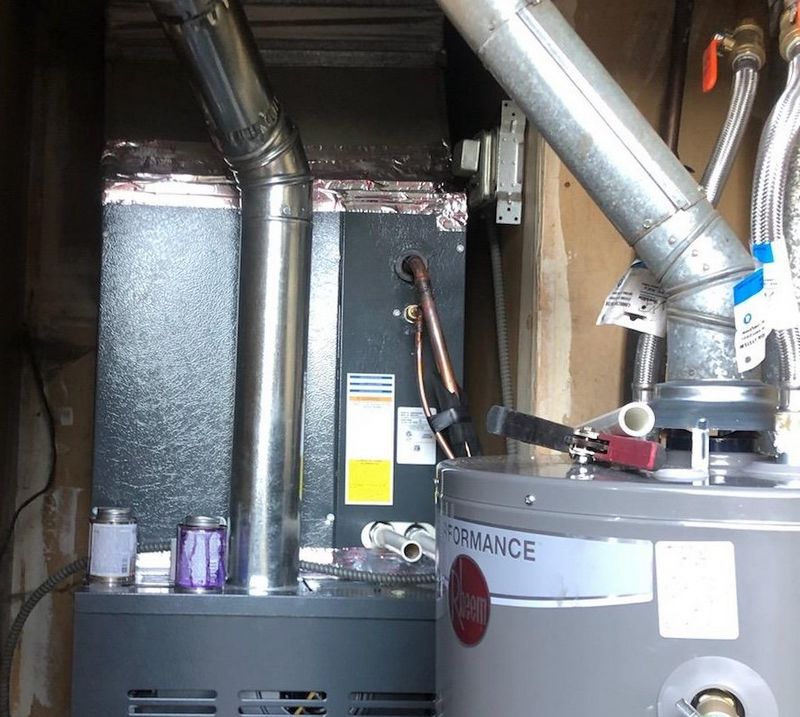
Top Furnace Problems. Part 1
When the cold winter months roll around, the last thing you want is a malfunctioning furnace. However, even with regular maintenance, furnaces can develop a range of issues that may leave you shivering in the cold. In this article, we will explore some common furnace problems and provide solutions for fixing them.
One of the most common issues homeowners face with their furnaces is poor airflow. This can result in uneven heating throughout your home and decreased energy efficiency. There are several possible causes for poor airflow, such as a dirty air filter or blocked vents. To fix this problem, start by checking and replacing the air filter if it is dirty. Additionally, ensure that all vents in your home are open and unobstructed.
Another frequent problem with furnaces is ignition issues. If your furnace is not igniting properly, you may notice that it takes longer for your home to warm up or that it fails to heat at all. Ignition problems can be caused by a faulty pilot light or a malfunctioning electronic ignition system. If you have a pilot light, make sure it is lit. If you have an electronic ignition system, consider contacting a professional to diagnose and repair the issue.
Maintenance plays a crucial role in keeping your furnace running smoothly. Neglecting regular maintenance tasks can lead to a variety of problems, such as dirty filters, worn-out parts, and decreased efficiency. To prevent these issues, it is recommended to schedule annual furnace maintenance with a professional technician. During this maintenance visit, the technician will clean and inspect your furnace, ensuring that it is in optimal condition.
Lastly, a faulty thermostat can also cause problems with your furnace. If your furnace is not turning on or off when it should, or if it is not maintaining the desired temperature, the thermostat may be to blame. Check the thermostat settings and make sure they are correctly calibrated. If the issue persists, consider replacing the thermostat or contacting a professional for assistance.
In conclusion, understanding and addressing common furnace problems can help you maintain a comfortable and warm home during the winter months. By addressing issues with airflow, ignition, maintenance, and the thermostat, you can keep your furnace running efficiently and avoid costly repairs. Remember, if you are unsure about how to fix a problem, it is always best to seek professional assistance.
Common Furnace Problems and How to Fix Them
When it comes to keeping your home warm and cozy, your furnace plays a vital role. However, just like any other mechanical device, furnaces can sometimes experience issues that prevent them from working properly. In this article, we will discuss the top furnace problems and provide you with tips on how to fix them.
- Thermostat malfunction: A common furnace problem is a malfunctioning thermostat. If your furnace is not heating your home to the desired temperature or if it is constantly turning on and off, the thermostat may be the culprit. Check the temperature settings and replace the thermostat if necessary.
- Ignition problems: If your furnace is not producing heat, it may be due to ignition problems. The pilot light or electronic ignition system may not be working properly. Try relighting the pilot light or consult a professional for repairing or replacing the ignition system.
- Lack of maintenance: Regular furnace maintenance is crucial to keep it running efficiently. Neglecting maintenance tasks like cleaning or replacing air filters can lead to reduced airflow and decreased heating performance. Make sure to schedule regular maintenance appointments to prevent such problems.
- Blower motor issues: A faulty blower motor can cause poor airflow and inadequate heating. If you notice weak or no airflow from the vents, it is likely that the blower motor needs repair or replacement. Contact a professional technician to diagnose and fix the issue.
- Noisy operation: Unusual noises coming from your furnace, such as rattling or banging sounds, can indicate underlying problems. Loose components or worn-out parts may be the cause. Inspect the furnace and tighten any loose connections. If the noise persists, it is best to call a technician for further inspection and repair.
Remember, some furnace problems may require professional expertise, especially if you are not familiar with HVAC systems. However, regular maintenance and timely repairs can help prolong the lifespan of your furnace and keep it operating efficiently. Don’t hesitate to reach out to a qualified technician when needed to ensure your home stays warm during the colder months.
Lack of Heat
If your furnace is not producing enough heat, there could be several potential issues to address. First, check the ignition system. If the ignition is faulty or not working properly, it can prevent the furnace from producing heat. In this case, you may need to replace the ignition system or have it professionally repaired.
Another common cause of a lack of heat is airflow problems. If the airflow is restricted or blocked, the warm air may not be able to circulate properly throughout your home. Check the air filters and clean or replace them if necessary. Also, make sure that all vents and registers are open and free from obstructions.
The thermostat could also be a source of the problem. Ensure that the thermostat is set to the desired temperature and that it is functioning correctly. If the thermostat is not sending the proper signals to the furnace, it may not turn on or produce sufficient heat. Consider recalibrating or replacing the thermostat if needed.
Finally, lack of heat can sometimes be attributed to poor maintenance. Regular maintenance is crucial for the efficient and reliable operation of your furnace. Schedule an annual furnace tune-up to clean and inspect the system, as well as identify any potential issues early on.
By addressing these common issues related to a lack of heat, you can ensure that your furnace operates effectively and keeps your home warm and comfortable throughout the colder months.
Noisy Operation
If your furnace is making strange or loud noises, it can be an indication of several maintenance or operational problems. One common cause of a noisy furnace is poor airflow. When there is a restriction in the airflow, it can cause the furnace to work harder, leading to excessive noise. Make sure to check and clean the air filter regularly to ensure proper airflow.
Another possible cause of noisy operation is a problem with the blower motor. If the blower motor is damaged or worn out, it can create a loud humming or buzzing sound. In this case, it may be necessary to replace the blower motor to resolve the issue.
A malfunctioning heat exchanger can also result in a noisy furnace. The heat exchanger is responsible for transferring heat from the burner to the air. If there is a crack or leak in the heat exchanger, it can cause a rumbling or banging noise. This is a serious issue that requires immediate attention as it can be a safety hazard. Contact a professional for repair or replacement of the heat exchanger.
In some cases, noisy operation can be attributed to a faulty thermostat. If the thermostat is not properly calibrated or is malfunctioning, it can cause the furnace to cycle on and off frequently, resulting in excessive noise. Adjusting or replacing the thermostat may be necessary to resolve the issue.
If you have tried troubleshooting these common causes of noisy furnace operation and the problem persists, it is best to contact a qualified HVAC technician for further diagnosis and repair. They have the expertise and tools to identify and fix any underlying issues with your furnace to ensure quiet and efficient operation.
Pilot Light Goes Out
One common problem that homeowners may encounter with their furnace is a pilot light that goes out. The pilot light is responsible for the ignition of the furnace. When it goes out, the furnace will not be able to produce heat.
There are several reasons why a pilot light may go out. One possible cause is a faulty thermocouple. The thermocouple is a device that senses the heat from the pilot light and sends a signal to the furnace’s thermostat. If the thermocouple is faulty, it may fail to sense the heat and shut off the gas supply, causing the pilot light to go out.
Another potential cause is a dirty or clogged pilot orifice. Over time, dust and debris can accumulate in the orifice, obstructing the gas flow and causing the pilot light to go out. Regular furnace maintenance and cleaning can help prevent this issue.
If your pilot light keeps going out, it is important to check for any drafts or airflow issues around the furnace. Strong drafts can blow out the pilot light, preventing it from staying lit. Make sure that all windows and doors are properly sealed and that there are no vents or fans directly blowing towards the furnace.
If you are unable to fix the pilot light issue yourself, it is recommended to contact a professional furnace repair technician. They will have the necessary knowledge and tools to diagnose and fix the problem. Regular maintenance and timely repairs can help ensure the longevity and efficiency of your furnace.
Poor Air Quality
Poor air quality can be a common issue with furnaces and can have various causes. Here are some potential reasons for poor air quality in your home:
- Clogged air filters: Dirty or clogged air filters can restrict airflow and cause dust and other particles to circulate in the air.
- Ignition problems: If the furnace’s ignition system is not working properly, incomplete combustion can occur, leading to the release of harmful gases into the air.
- Thermostat issues: A malfunctioning thermostat can cause the furnace to run at higher or lower temperatures than desired, affecting air quality.
- Inadequate airflow: Poor airflow through the vents can result in stagnant air and an accumulation of dust and allergens.
- Lack of regular maintenance: Neglecting regular furnace maintenance can lead to a buildup of dust, debris, and contaminants, which can impact air quality.
To improve air quality in your home, you can take the following steps:
- Replace air filters regularly: It is recommended to replace air filters every 1 to 3 months, depending on the type of filter and level of usage.
- Inspect and clean the ignition system: If you suspect ignition problems, it is important to have a professional technician inspect and clean the ignition system to ensure proper combustion.
- Check and calibrate the thermostat: If you notice temperature inconsistencies, have the thermostat checked and calibrated by a qualified technician.
- Clean and maintain the vents and ducts: Regularly vacuum and clean vents and ducts to remove dust and allergens.
- Schedule routine furnace maintenance: Professional maintenance, including thorough cleaning and inspection, should be scheduled annually to prevent issues and ensure optimal performance.
By addressing these potential causes and taking proactive measures to maintain your furnace, you can improve air quality and ensure a healthier indoor environment for you and your family.
Frequent Cycling
One common problem that homeowners may encounter with their furnace is frequent cycling. This refers to the furnace turning on and off more frequently than normal.
There can be several reasons for frequent cycling. One possible cause is a dirty or clogged air filter. When the air filter becomes dirty, it restricts airflow to the furnace, causing it to overheat. As a result, the furnace automatically shuts off to prevent any damage.
Another possible cause of frequent cycling is a malfunctioning thermostat. If the thermostat is not calibrated correctly or if it is faulty, it can send incorrect signals to the furnace, causing it to turn on and off rapidly.
In some cases, frequent cycling may be due to problems with the heat exchanger. A cracked or damaged heat exchanger can cause the furnace to overheat, leading to frequent cycling as a safety measure.
To address this issue, it is important to perform regular maintenance on your furnace. This includes regularly replacing the air filter to ensure proper airflow. Additionally, it is recommended to have your thermostat checked and calibrated by a professional if you suspect it may be causing the frequent cycling.
If you notice frequent cycling and are unable to identify the cause, it is best to contact a qualified HVAC technician to inspect and diagnose the problem. They will be able to identify and fix any issues with your furnace, ensuring it operates efficiently and effectively.
Blower Fan Not Working
If your furnace is running but the blower fan is not working, there are a few common causes that you can check before calling for a repair. First, check the thermostat to make sure it is set to the desired temperature and the fan is set to “on” or “auto”. If the thermostat settings are correct, the next step is to check the circuit breaker or fuse panel to ensure that power is being supplied to the furnace. If the circuit breaker has tripped or a fuse has blown, resetting or replacing them may solve the problem.
Another possible cause of a malfunctioning blower fan is a dirty air filter. A clogged air filter can restrict airflow and cause the furnace to overheat, which could prevent the blower fan from functioning properly. Take out the air filter and inspect it for dirt or debris. If it is dirty, replace it with a new one and see if that resolves the issue. Regularly changing the air filter is an important part of furnace maintenance and can help prevent many heating problems.
If the above steps do not resolve the issue, it is possible that the blower motor or its capacitor may be faulty. In this case, it is best to contact a professional HVAC technician for repair or replacement. Attempting to fix these components without proper knowledge and tools can be dangerous and may cause further damage to the furnace.
In summary, a blower fan not working can be caused by various issues ranging from simple thermostat settings to more complex problems with the blower motor. Check the thermostat settings, circuit breaker or fuse panel, and air filter before calling for professional help. Regular furnace maintenance and inspections can also help prevent these problems and ensure that your heating system operates efficiently and effectively.
Ignition Problems
Ignition problems can be a common cause of heat issues in a furnace. When the ignition system of your furnace fails to function properly, it can result in a lack of heat production. Ignition problems can be caused by a variety of reasons, such as a faulty ignition switch, a worn-out ignition electrode, or a malfunctioning control module.
To diagnose and fix ignition problems, it is important to start with basic repair and maintenance tasks. Check if the ignition switch is turned on and ensure that the pilot light is lit. If the pilot light is not lit, try relighting it following the manufacturer’s instructions. If the pilot light still won’t ignite, inspect the ignition electrode for any signs of damage or wear. Clean or replace the electrode if necessary.
If the ignition problems persist, it may be necessary to call a professional technician to troubleshoot and resolve the issue. They have the necessary skills and tools to identify the root cause of the problem and provide the most appropriate solution. Ignition problems can be complex, and attempting to fix them without proper knowledge and experience can lead to further damage.
In addition to addressing ignition problems, it is also essential to ensure proper airflow and a functioning thermostat in your furnace. Poor airflow can inhibit the ignition process, while a malfunctioning thermostat can prevent your furnace from producing heat efficiently. Regular maintenance and cleaning of your furnace can help prevent ignition problems and other common furnace issues.
Malfunctioning Thermostat
A malfunctioning thermostat can cause a range of issues with your furnace. The thermostat is responsible for controlling the temperature and turning the furnace on and off as needed. If it is not functioning correctly, you may experience problems such as inconsistent airflow, inadequate heat, or the furnace not turning on at all.
Maintenance is key to preventing thermostat problems. Regularly check and clean the thermostat to ensure it is free from dust and debris. You should also make sure that the thermostat is located in an area away from any heat sources or drafts, as this can affect its performance.
If you are experiencing problems with your thermostat, there are a few steps you can take to troubleshoot the issue. First, check the batteries and replace them if necessary. Next, make sure the thermostat is set to the desired temperature and mode. If these steps do not solve the problem, you may need to have your thermostat repaired or replaced.
It’s important to address thermostat issues promptly, as they can affect the overall performance and efficiency of your furnace. A malfunctioning thermostat can lead to increased energy consumption and higher heating bills. By regularly maintaining and addressing any thermostat problems, you can ensure that your furnace operates at its top performance and keeps your home comfortable throughout the winter season.
Strange Smells
One common furnace problem that homeowners may encounter is strange smells coming from their heating system. These odors can indicate various issues that need to be addressed promptly to prevent further damage.
If you notice a burning smell, it could be due to a malfunctioning thermostat or an overheating furnace. In this case, it is recommended to turn off the furnace immediately and contact a professional for repair. Ignoring this problem can lead to fire hazards and potential damage to the entire system.
Another possible cause of strange smells is a lack of regular maintenance. Over time, dust, dirt, and other debris can accumulate inside the furnace, particularly in the air filter and burner. This build-up can cause unpleasant odors when the furnace is running. Regular maintenance, including filter replacement and cleaning, can help prevent this issue.
In some cases, the smell may be similar to rotten eggs or sulfur. This odor could indicate a gas leak. If you suspect a gas leak, it is imperative to evacuate your home immediately and contact your gas company for assistance. Gas leaks are extremely dangerous and require professional attention to fix the problem and ensure the safety of your household.
Finally, poor airflow can also lead to strange odors. If the furnace is not receiving enough air, it can overheat and produce a burnt smell. It is important to check the vents and ducts for any blockages that could be restricting airflow. Additionally, ensuring that all registers are open and unobstructed can help improve airflow and eliminate unpleasant odors.
In conclusion, strange smells coming from your furnace should not be ignored. Identifying and addressing the underlying problems promptly can prevent further damage to the system and ensure the safety and comfort of your home.
Leaking Water
One of the top furnace problems homeowners may encounter is a leaking water issue. If you notice water pooling around your furnace, it is important to address this problem promptly as it can lead to further damage.
The most common cause of a leaking water issue in a furnace is a clogged condensate drain line or a faulty condensate pump. The condensate drain line is responsible for removing water that is produced when the furnace is running. If this line gets blocked, the water can back up and start leaking out of the furnace.
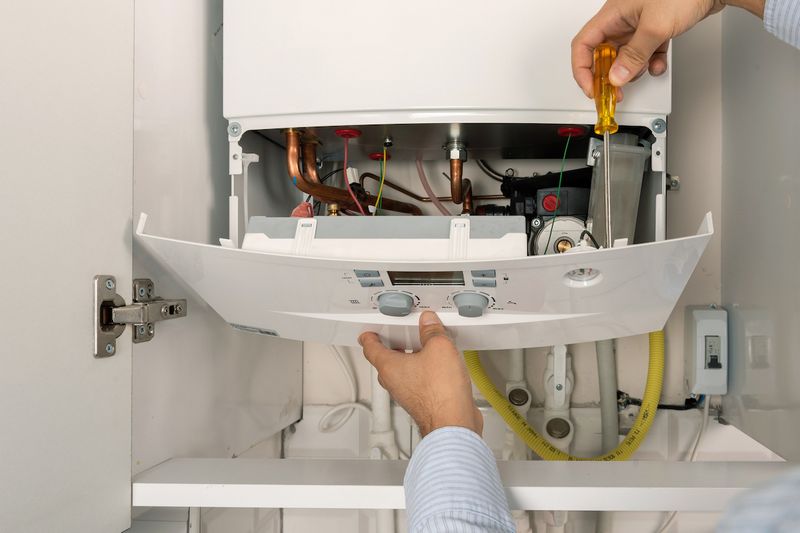
To fix this problem, you can try clearing the condensate drain line by using a wet/dry vacuum to remove any debris or buildup that may be causing the blockage. If this does not solve the issue, you may need to call a professional HVAC technician to repair or replace the condensate drain line or pump.
In addition to a clogged condensate drain line, a leaking water issue can also be caused by a cracked heat exchanger or a faulty secondary heat exchanger. If either of these components is damaged, it can cause water to leak out of the furnace. In this case, it is important to consult a professional HVAC technician who can properly diagnose the problem and recommend the necessary repairs.
Regular furnace maintenance can help prevent leaking water problems. It is important to schedule annual inspections and cleanings to ensure that all components are in good working condition. Additionally, maintaining proper airflow around the furnace by keeping vents and air filters clean can also help prevent water leaks.
If you notice any water leaking from your furnace, it is important to address the issue as soon as possible to prevent further damage and ensure that your furnace continues to function properly.
Inconsistent Temperature
If you notice that your furnace is not maintaining a consistent temperature in your home, there could be a few potential causes. Here are some common issues and how to fix them:
1. Maintenance: Regular maintenance is crucial for the efficient and reliable operation of your furnace. If you have neglected maintenance tasks, it can lead to poor temperature control. Make sure to schedule annual maintenance to clean and inspect the system.
2. Thermostat: The thermostat is responsible for regulating the temperature in your home. If it is not functioning properly, it can cause inconsistent temperatures. Check if the thermostat is set correctly and replace the batteries if needed. If the problem persists, you may need to replace the thermostat.
3. Furnace Issues: The furnace itself may have problems that are causing inconsistent temperatures. Issues such as a malfunctioning flame sensor, a clogged air filter, or a faulty ignition system can disrupt the heat distribution. Inspect these components and replace or repair them as necessary.
4. Airflow Problems: Poor airflow can also contribute to inconsistent temperature levels. Check the air registers and vents to ensure they are not blocked or obstructed. Additionally, clean or replace the air filter regularly to allow for proper airflow throughout the system.
By addressing these common furnace problems, you can improve the temperature control in your home and enjoy a more comfortable living environment.
Cracked Heat Exchanger
A cracked heat exchanger is a common problem that can occur in a furnace. The heat exchanger is responsible for transferring heat from the combustion chamber to the air that circulates throughout the house. When the heat exchanger becomes cracked, it can lead to a number of issues and must be repaired or replaced.
Maintenance is key to preventing a cracked heat exchanger. Regularly cleaning or replacing your furnace air filters can help prevent a buildup of dust and debris that can cause the heat exchanger to crack. It is also important to schedule annual inspections and tune-ups to ensure that your furnace is running efficiently and to catch any potential problems before they become more serious.
A cracked heat exchanger can cause a variety of problems with your furnace. It can lead to decreased heating efficiency, as the heat exchanger is no longer able to transfer heat effectively. This can result in higher energy bills and a less comfortable home. In addition, a cracked heat exchanger can create safety hazards, as it can allow carbon monoxide, a toxic gas, to leak into your home.
If you suspect that your heat exchanger is cracked, it is important to contact a professional HVAC technician to assess the situation and make any necessary repairs or replacements. Attempting to fix a cracked heat exchanger yourself can be dangerous and may cause further damage to your furnace.
There are a few signs that may indicate a cracked heat exchanger. These include a strange odor or smell coming from your furnace, visible cracks or damage to the heat exchanger, and carbon monoxide detectors going off. If you notice any of these issues, it is important to turn off your furnace and contact a professional immediately.
In some cases, it may be more cost-effective to replace the entire furnace rather than just the heat exchanger. A professional HVAC technician can help you determine the best course of action based on the age and condition of your furnace.
To prevent a cracked heat exchanger and other furnace problems, it is important to prioritize regular maintenance and address any issues as soon as they arise. This includes keeping your thermostat set at the recommended temperature, ensuring proper airflow by keeping vents and registers clear, and making sure the ignition system is working properly.
- Regular maintenance can help identify and prevent a cracked heat exchanger
- A cracked heat exchanger can lead to decreased heating efficiency and safety hazards
- Contact a professional HVAC technician for repairs or replacements
- Signs of a cracked heat exchanger include strange odors, visible damage, and carbon monoxide detectors going off
- Consider replacing the entire furnace if necessary
- Prevent furnace problems by maintaining proper thermostat settings, airflow, and ignition system
Carbon Monoxide Leaks
One of the top and most dangerous problems that can occur with a furnace is a carbon monoxide leak. Carbon monoxide is a toxic gas that can be emitted from a malfunctioning or improperly installed furnace. It is odorless and colorless, making it difficult to detect without the use of a carbon monoxide detector.
Carbon monoxide leaks can occur due to a variety of reasons. One possible cause is a cracked heat exchanger, which can allow carbon monoxide to escape into the airflow of your home. Another possible cause is a blocked chimney or vent, which can prevent the gas from being properly vented outside.
To prevent carbon monoxide leaks, it is important to schedule regular furnace maintenance. A professional technician will inspect and clean the furnace, ensuring that all components are functioning properly and there are no signs of leaks. It is also important to have carbon monoxide detectors installed in your home, especially near sleeping areas and the furnace.
If you suspect a carbon monoxide leak, it is important to take immediate action. Open windows and doors to ventilate the area, and turn off the furnace. Evacuate your home and call a professional to inspect the furnace and address the issue. Carbon monoxide leaks can be life-threatening, so it is crucial to prioritize your safety and the safety of your family.
In conclusion, carbon monoxide leaks are a serious issue that can arise with a furnace. Regular maintenance and the installation of carbon monoxide detectors are essential in preventing and detecting these leaks. If you suspect a leak, take immediate action to ensure your safety.
Clogged Air Filters
One of the most common furnace problems is clogged air filters. The air filters in your furnace play a crucial role in maintaining the quality of air in your home. Over time, these filters can become clogged with dust, debris, and other pollutants, which can significantly impact the performance of your furnace.
A clogged air filter can cause several issues with your furnace. Firstly, it can restrict the airflow, making it difficult for warm air to circulate throughout your home. This not only affects the comfort level in each room but can also put unnecessary strain on your furnace’s blower motor, leading to increased energy consumption and potentially causing overheating.
Clogged air filters can also affect the efficiency of your furnace’s heat exchanger. If the airflow is restricted, the heat exchanger has to work harder to transfer heat to the air, which can lead to overheating and even a cracked heat exchanger. This is not only a costly repair but also a significant safety hazard, as it can release carbon monoxide into your home.
To fix clogged air filters, start by turning off your furnace’s power supply. Locate the air filter, which is typically found near the furnace’s blower motor. Remove the filter and inspect it for dirt and debris. If it is dirty, replace it with a new one. Make sure to use the correct size and type of filter recommended by the furnace manufacturer.
Regularly replacing or cleaning your air filters is essential to maintaining the efficiency and longevity of your furnace. Depending on the type of filter and your home’s air quality, it is generally recommended to replace the filters every one to three months. By doing so, you can ensure proper airflow, prevent unnecessary strain on your furnace, and improve the quality of air in your home.
Inadequate Insulation
One common issue with furnaces is inadequate insulation. Poor insulation can cause heat loss and inefficiency, resulting in higher energy bills and a less comfortable home. It is important to address this problem to ensure that your furnace is operating at its optimal level.
There are several signs that may indicate inadequate insulation in your home. These include:
|
To repair inadequate insulation, it is recommended to follow these steps:
|
In addition to fixing inadequate insulation, it is important to address other common furnace problems that can affect its performance. These include ignition issues, airflow problems, thermostat malfunctions, and lack of regular maintenance. By addressing these issues promptly, you can ensure that your furnace operates efficiently and effectively throughout the year.
Q&A:
How do I know if my furnace is not working properly?
If your furnace is not working properly, you may notice that the temperature in your house is not reaching the desired level, or you may feel cold air coming out of the vents instead of warm air. You may also hear strange noises coming from the furnace, such as banging, rattling, or squeaking.
What should I do if my furnace is not producing enough heat?
If your furnace is not producing enough heat, there are a few things you can check. Make sure that the thermostat is set to the desired temperature and that the batteries are not dead. Check the air filter and replace it if it is dirty. If those steps do not solve the issue, you may need to call a professional to inspect and repair your furnace.
Can a faulty thermostat cause furnace problems?
Yes, a faulty thermostat can cause furnace problems. If the thermostat is not functioning properly, it may not communicate the correct temperature to the furnace, causing it to not cycle on or off as it should. If you suspect that your thermostat is faulty, you can try replacing the batteries or resetting it to see if that resolves the issue. If not, you may need to replace the thermostat altogether.
Why is my furnace making strange noises?
There are several reasons why your furnace might be making strange noises. It could be due to a loose or damaged part, such as a belt, motor, or fan. It could also be because of a dirty burner or a problem with the gas valve. If you are not comfortable diagnosing and fixing the problem yourself, it’s best to call a professional to inspect and repair your furnace.
How often should I change the air filter in my furnace?
It is recommended to change the air filter in your furnace every 1-3 months, depending on the type of filter and the amount of dust and debris in your home. A dirty air filter can restrict airflow, put strain on your furnace, and decrease its efficiency. Regularly changing the air filter can help prevent common furnace problems and prolong the lifespan of your unit.
Why is my furnace not turning on?
There could be several reasons why your furnace is not turning on. It could be due to a power issue, such as a blown fuse or tripped circuit breaker. It could also be a problem with the thermostat or ignition system. It’s best to check these components and consult a professional if you’re unsure.
Why is my furnace making strange noises?
If your furnace is making strange noises, such as banging, rattling, or squealing, it could be indicative of a problem. There could be a loose or broken component, such as a blower wheel, fan belt, or motor. It’s recommended to turn off the furnace and call a professional to diagnose and fix the issue.

